
Imagine, if you will, a world where your Amazon delivery takes not two days, but two years, crossing continents on the backs of camels instead of the belly of a Boeing. Welcome to the ancient Silk Road, a network of trade routes not just for silk, but for everything from spices to precious metals, connecting the vibrant cultures of the East and West long before the concept of next-day delivery was even a twinkle in the eye of commerce. This ancient network wasn't just eBay without the internet; it was the dark web of its time, clandestine and mysterious, weaving through the continents, whispering stories of distant lands.
In today's hyper-connected world, it's easy to order a set of artisanal coasters from halfway across the globe with the click of a button. Yet, every time we do so, we're retracing the digital footsteps of those ancient traders — minus the risk of bandits or sandstorms, unless you count the occasional internet outage as a modern-day peril. The Silk Road set the stage for the grand theater of e-commerce we witness today, where the exchange of goods transcends physical boundaries, and cultural exchanges happen in the blink of an eye. Our modern marketplace might be virtual, but the essence remains the same: connection, trade, and the insatiable human curiosity to see what’s out there.
This narrative takes you on a caravan journey from the past into the present, exploring how the ancient Silk Road not only paved the actual roads but also laid down the intangible pathways that would eventually form the backbone of our digital marketplaces. Through whispers of history, we’ll delve into the rich exchanges, not just of goods, but of culture, technology, and ideas that dressed the Silk Road and how these echoes reverberate in the vast virtual shopping aisles we stroll today.
So buckle up (or should we say, Camel up?) for a ride through time, from the dusty trails led by the hoofbeats of caravans to the smooth scroll of your fingertip across the screen. As we unravel the skeins of history, we find not only the thread of commerce that connects the ancient and the digital but also a story of human endeavor that is as much about the journey as it is about the destination. Here's to the old-school traders — may their camels rest in peace, knowing they walked so our packages could fly.
The Historical Significance of the Silk Road
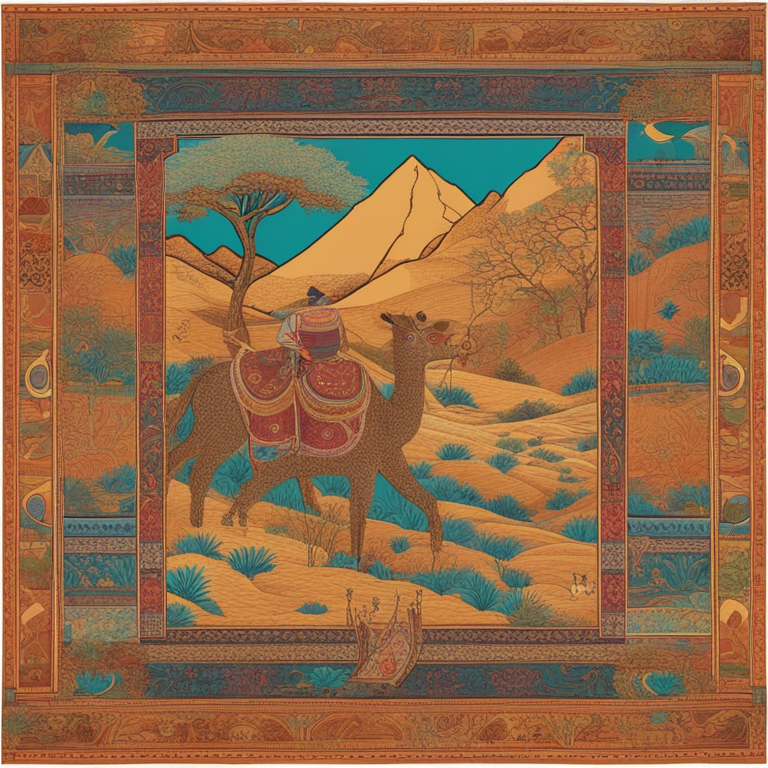
Before we navigated the digital highways of the internet, there was another network that connected the far reaches of the earth: the Silk Road. This wasn't just a single route, but a complex web of trade paths crisscrossing across continents, linking the ancient empires of China with Europe and the Mediterranean. It was eBay, Amazon, and Etsy rolled into one, minus the instant gratification of two-day shipping. Here, the exchange wasn't just in goods but in culture, religion, and ideas, setting the stage for the first iteration of globalisation long before the term was coined.
Origins and Expansion
The Silk Road sprang to life during the Han Dynasty, an ambitious network that stretched over 4,000 miles, piercing through the rugged terrains of the Chinese, Indian, Persian, and Roman empires. Imagine signing up for a delivery job that might take you a couple of decades to complete! This network didn't just carry silk, despite its namesake; it was a conveyor belt of spices, textiles, precious stones, and even more precious ideas. The Silk Road was the original World Wide Web, a superhighway that connected the dots making up the ancient world.
Cultural and Economic Exchange
This wasn't merely trade in the physical sense; it was an exchange on a cultural level. As merchants traveled, they brought with them not just goods, but their religions, philosophies, and even cuisines. The Silk Road was like a grand, ongoing international fair where East met West, and everyone went home richer, not just in their pockets but in their minds and spirits too. It’s like your goods arriving with a side of enlightenment.
Technological and Knowledge Transfer
And let's not forget the technology transfer — this was the original torrent exchange, minus the piracy. Innovations such as papermaking, the compass, and even gunpowder traveled via this ancient network, proving that the Silk Road was as much about the exchange of knowledge as it was about commodities. It was the seeding ground for the cross-pollination of ideas, laying down the tracks for future innovations.
From Caravans to Carriers: The Evolution of Trade

The age of exploration kicked into high gear with the advent of maritime routes, a game-changer that made the world a little smaller and a lot more connected. As Europeans took to the seas, the focus of trade shifted from caravans to caravels, marking a new era of international commerce. It was akin to upgrading from dial-up to fiber optic; the delivery of goods accelerated, and the world saw the birth of a global economy. The Silk Road quietly receded into the background, its legacy woven deeply into the fabric of this new trading world.
Transition to Maritime Routes
The switch from camel to ship wasn't just about speed; it was about volume. Maritime trade allowed for the bulk transport of goods, transforming local markets into nodes in a global trading system. This wasn't just a leap forward; it was a giant leap, propelling humanity towards a future where goods and ideas flowed more freely than ever before.
The Industrial Revolution
Then came the Industrial Revolution, heralding a new era of technological advancements and drastically changing the face of trade yet again. With the invention of the steam engine, railways, and eventually the combustion engine, the world shrank even further. Goods that once took years to travel between continents could now make the journey in weeks or days. The Silk Road's spirit lived on, its essence embedded in these new trade routes that continued to bring people and cultures closer together.
The Silk Road's Influence on Modern E-Commerce
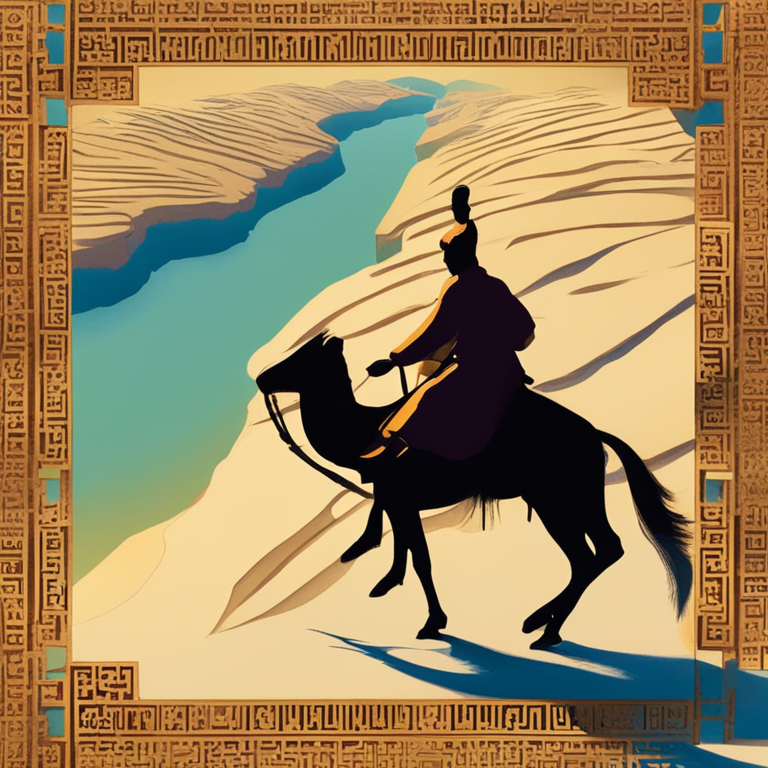
In the grand tapestry of history, the Silk Road stands out as the prototype of today’s e-commerce platforms. Just as the ancient routes connected disparate cultures and economies, today's digital marketplaces link us with virtual shops halfway across the globe. Every click on "Add to Cart" is a nod to those ancient traders who first paved these virtual paths with their footprints in the sand.
Global Connectivity
The internet has become our new Silk Road, a digital pathway that connects East and West, North and South, in a network of e-commerce that dwarfs the ancient trade routes in its scope and immediacy. Where once the journey of goods was fraught with physical dangers, now it's the speed of delivery and the rate of customs clearance that keep us on edge. Yet, the underlying principle remains the same: the desire to reach beyond our immediate horizon, to connect, trade, and share our stories with the world.
Cultural Exchange
Just as the Silk Road was a conduit for cultural exchange, today's online platforms serve as modern arenas where ideas and traditions mingle freely. From the art of Kintsugi to the flavors of far-off lands, e-commerce has made cultural exchange a daily possibility, bringing the richness of the world to our doorsteps and screens. It's a reminder that, though the mediums may change, the human thirst for connection and discovery remains constant.
Innovation and Technology
And the legacy of innovation, spurred by the Silk Road, thrives in today's digital age. The evolution from caravans to digital shopping carts represents more than just a shift in the mode of trade; it symbolizes the enduring human spirit of exploration and adaptation. As we navigate our modern marketplaces, filled with goods from every corner of the globe, we walk in the footsteps of those ancient traders, continuing the journey of exchange and innovation that has always driven civilization forward.
Conclusion
The Silk Road might seem a distant memory, a relic of the past in this era of instant gratification and digital connectivity. Yet its influence is imprinted on every aspect of modern e-commerce, from the global network of trade to the cultural exchanges that enrich our lives. As we look to the future of global trade and commerce, it's clear that the echoes of the Silk Road will continue to resonate, reminding us that at the heart of all commerce is a story of human connection, exploration, and the unending quest for shared understanding.
Challenges and Opportunities in the Digital Bazaar
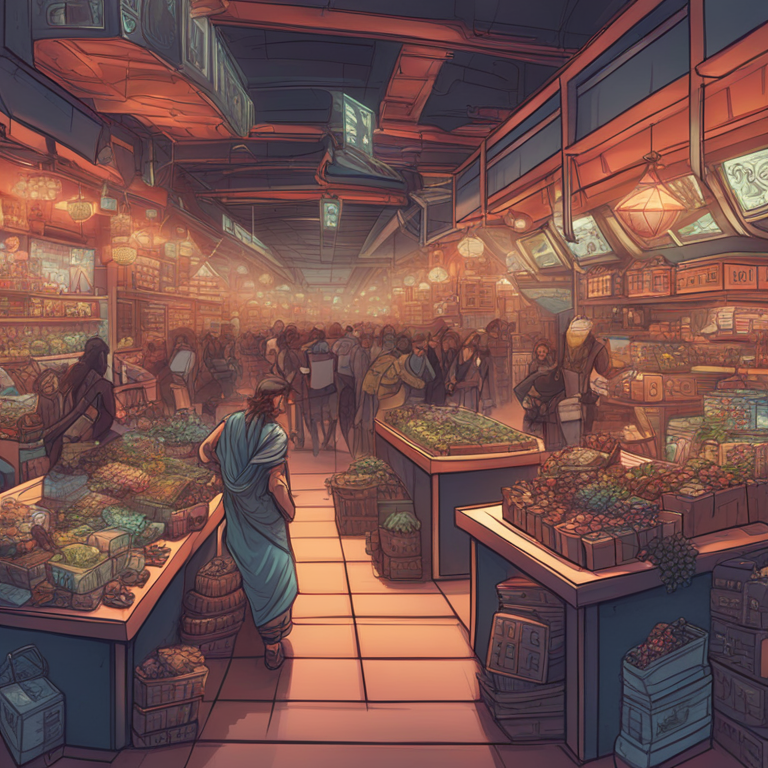
In the sprawling digital bazaar that our modern e-commerce landscape has become, every click and transaction brings with it a suite of challenges and opportunities that would have boggled the minds of ancient Silk Road traders. Imagine trying to explain to a 7th-century merchant that today, a single product can travel digitally across continents in microseconds, only to be held up by something as mundane as a payment gateway or as critical as data encryption. It’s like telling them their camels could fly, but only if the weather—read, Wi-Fi—holds up.
Regulation and Security: The Eternal Caravan Guards
Just as ancient traders had to contend with the likes of bandits and unforgiving deserts, today’s digital merchants face their own brand of brigands: cyber threats. Navigating the complex world of international regulation and cybersecurity is akin to traversing a perilous desert, albeit one populated by hackers and regulatory sandstorms. The digital landscape is fraught with potential pitfalls, where the absence of robust security measures and compliance with international e-commerce laws can spell doom for unsuspecting traders. Yet, it's these very challenges that drive innovation in security technologies, making the caravan safer for all.
Sustainability: Echoes of Environmental Responsibility
In the age of the Silk Road, the environmental impact of trade was footprints in the sand and the occasional camel caravan turning a verdant oasis into a bustling marketplace. Fast forward to today, and the carbon footprint of global e-commerce is a tapestry of jet fuel, packaging waste, and energy consumption that spans the globe. As we pivot from camels to cargo planes, the question of sustainability becomes ever more pressing. It's a complex issue, but also an opportunity for innovation—in materials, logistics, and digital efficiency—to ensure the footprint we leave for future generations is not merely one of consumption, but of conscientious stewardship.
Globalization 2.0: The Silk Road Goes Digital
As we navigate the complexities of modern e-commerce, it becomes clear that the principles of the Silk Road—connectivity, exploration, and exchange—are more relevant than ever, albeit in a digital form. The challenges of regulation, cybersecurity, and sustainability are but waypoints on the journey. They offer opportunities for growth, learning, and innovation that can propel us into a new era of global trade. Just as the Silk Road connected disparate cultures and economies, today's digital marketplaces link us with virtual shops halfway across the globe, creating a truly global village. Perhaps, in this way, we are more connected to our ancient predecessors than we realize, continuing a tradition of trade and cultural exchange that spans millennia.
The Silk Road's Lasting Legacy in E-Commerce

In the tapestry of human history, the Silk Road occupies a special place, reminding us how intertwined trade, culture, and innovation have been in shaping civilizations. Today's e-commerce might seem worlds apart from the spice-laden caravans that once trekked across deserts, but at their core, the essence remains the same. Each package delivered to our doorstep is a modern echo of those ancient routes, a testament to humanity's unending quest for connection and discovery.
The challenges we face today—be they in cyber security, regulatory compliance, or sustainability—are but the latest chapter in this ongoing saga of trade. They compel us not only to find solutions for the present but also to dream of what lies beyond the digital horizon. As we leverage technology to weave tighter connections across our planet, the legacy of the Silk Road serves as both a foundation and a beacon, guiding us towards a future where trade continues to break down barriers, foster innovations, and, most importantly, bring people closer together.
So, as we chart our course through the digital age, let us remember the caravans that first traced those pathways across continents. Their journey, driven by the same blend of necessity, curiosity, and ambition that propels us today, laid the groundwork for our global marketplace. The Silk Road's legacy is not just in the goods that traveled its length but in the spirit of exchange and exploration that it symbolized—a spirit that continues to shape our world, one click at a time.
Bringing the Past into the Future: The Unseen Threads Connecting Ancient Commerce to Our Digital Age

When we peel back the layers of our modern e-commerce ecosystem, we discover a tapestry interwoven with the resilience, innovation, and spirit of the ancient Silk Road. This section delves into the invisible yet enduring threads that link the dawn of trade across harsh deserts to the seamless digital transactions we often take for granted today. With each tap on our screens, we are, in essence, traversing these age-old paths, redefined by the bytes and data that dominate our contemporary marketplace.
The DNA of Digital Commerce: Ancestral Echoes in Today's Transactions
At its core, the bustling online marketplaces of today are not so different from the ancient bazaars where languages mingled and cultures converged. The fundamental human desire to trade, explore, and connect has simply found a new expression in the digital realm. Every online transaction carries the DNA of those first exchanges along the Silk Road—grounded in curiosity, necessity, and the drive to bridge distant worlds. This genetic marker of commerce has simply evolved, from camelback caravans laden with spices to digital carts filled with goods from across the globe.
Logistics and Technology: From the Camel’s Back to Cloud Computing
The logistical miracles that allowed merchants to navigate treacherous landscapes mirror today’s complex web of digital infrastructure, ensuring that a package can leap from one continent to another with breathtaking speed. This progression from physical endurance to digital efficiency showcases humanity’s relentless pursuit of innovation. In this evolution, cloud computing has become the camel of the digital age, bearing the weight of countless transactions and information, tirelessly delivering digital goods through the vast desert of cyberspace.
Cultural Exchange in a Click: The Digital Agora
Just as the Silk Road was a conduit for unprecedented cultural and ideological exchange, the internet serves as a modern Agora, where ideas, art, and stories from every corner of the globe converge with a simple click. E-commerce platforms have become the new melting pots of civilization, where a statue from Nepal can find its home on a Swedish mantelpiece, and hand-crafted chocolates from Belgium can sweeten a day in rural Japan. In this digital marketplace, every transaction is an act of cultural bridging, echoing the ancient exchanges that occurred when caravans arrived in bustling markets, laden with the unknown and the exotic.
Sustainability Reimagined: The Caravan’s Legacy
In reflection, the Silk Road’s impact transcends mere commerce; it prompts us to reconsider our approach to sustainability in the digital era. Just as ancient traders adapted to the challenges of their environment, we are tasked with navigating the ecological impact of our global marketplace. The question of how to balance this carbon-heavy commerce with our planet's health is a direct descendant of the Silk Road's legacy, urging us to innovate towards a trade ecosystem that honors both our need for connection and our responsibility towards Earth.
The Silk Road: A Blueprint for the Future of Global Commerce
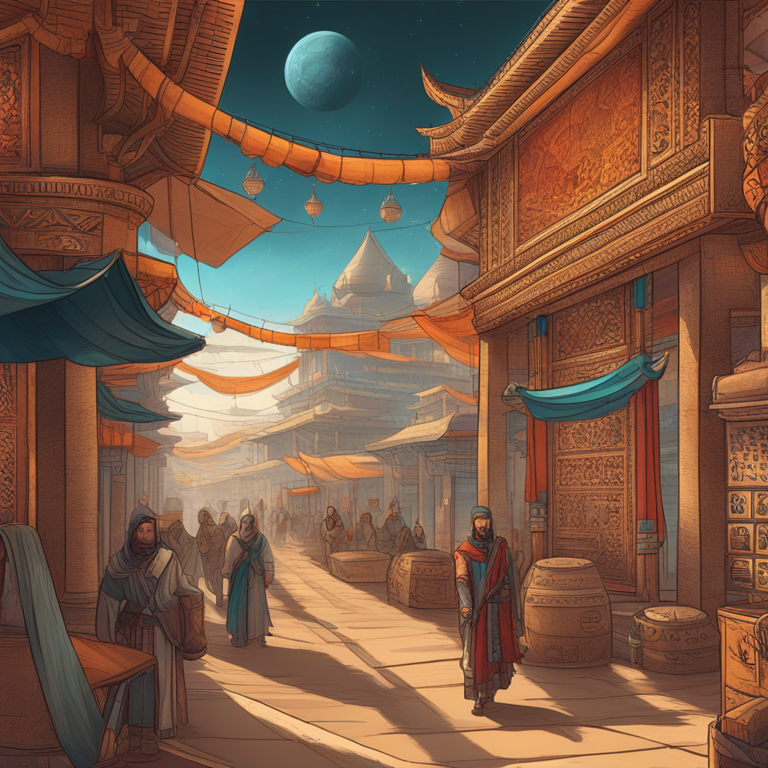
The story of the Silk Road is not just a historical recount; it is a blueprint for the future. As we stand on the precipice of new forms of trade, potentially through virtual reality or yet-to-be-imagined platforms, the lessons of adaptability, connectivity, and innovation from the Silk Road are more relevant than ever. The ancient trade routes remind us that at the heart of commerce is the human element—our deep-seated drive to connect, explore, and exchange. The Silk Road, with its caravans and traders, may belong to the past, but its spirit is deeply embedded in every digital transaction, every exchange of goods across borders, and every click that brings the world into our homes.
As we look forward, envisioning the next evolution of global commerce, we carry with us the legacy of the Silk Road—its challenges, its innovations, and its testament to human ingenuity. Like the traders of old, we are charting new territories in the digital realm, building on the foundations they laid. The future of e-commerce, global trade, and cultural exchange is rich with the potential for deeper connectivity and understanding, guided by the timeless lessons of a trade route that once connected worlds. As we navigate this future, let us remember that each step forward is part of a journey that spans millennia, a journey that continues to shape our shared human story, one click at a time.
Unraveling the Threads: The Lasting Impact of the Silk Road on E-Commerce
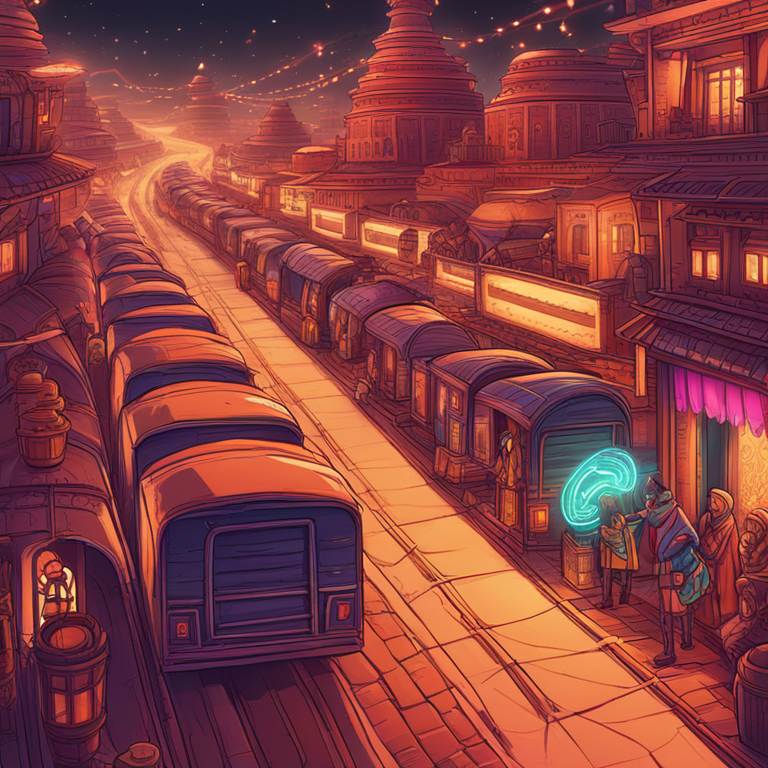
The Silk Road, a conduit of commerce, culture, and innovation, has etched an indelible mark on the landscape of modern e-commerce, weaving a rich tapestry that stretches from ancient caravans to the digital marketplaces of today. This article has journeyed through the inception, zenith, and evolution of this legendary trade network, trailing its echoes in the digital era. We've seen how camel tracks in the Asian deserts have morphed into digital data streams, connecting continents and cultures with the click of a button.
From the bustling bazaars where spices and silk changed hands to today's online marketplaces trading everything from music to machinery, the core essence of trade—connectivity, exchange, and exploration—remains unchanged. As we delved into the historical significance of the Silk Road, it was clear that this ancient nexus of trade routes was not just about the exchange of goods; it was a bridge linking distant worlds, fostering cultural exchanges and seeding innovations that have rippled through time.
The transition from caravans to carriers, and further into the age of digital commerce, underscores a relentless pursuit of efficiency and connectivity. This journey reflects humanity's undying spirit of exploration and ingenuity, where each era's breakthroughs stand on the shoulders of those who traversed the Silk Road's sandy stretches. Today's e-commerce giants—Amazon, eBay, Alibaba—owe a nod to the ancient traders who first stitched the world together, marketplace by marketplace.
The challenges and opportunities in today's digital bazaar—security, regulation, sustainability—are but modern iterations of historical hurdles. Cyber threats and regulatory landscapes echo the bandits and geopolitical barriers of old, while sustainability concerns remind us of the caravan's impact on the oasis towns. In facing these challenges, the spirit of the Silk Road's innovators inspires solutions that bridge past and present, ensuring the caravan moves ever onward.
As this narrative unfolded, we've painted a picture not just of a trade route, but of a journey that encapsulates humanity's unquenchable thirst for connection and discovery. The Silk Road's legacy, with its blend of commerce, culture, and technology, offers a blueprint for the future of global commerce. In the pixels and packets of our digital marketplaces, the essence of the Silk Road lives on, urging us to look beyond the horizon, just as those ancient traders did under starlit skies.
In conclusion, "Echoes of the Silk Road: How Ancient Trade Routes Paved the Way for Modern E-Commerce" is more than a historical account; it's a reminder of how the past shapes the present and guides the future. As we embark on new forms of commerce, perhaps in virtual realms yet to be imagined, the Silk Road stands as a testament to the enduring power of human connectivity. Let us carry forward its legacy of innovation, exploration, and exchange as we weave the next chapter in the grand saga of trade. Here's to the digital caravans of tomorrow—may they traverse as far and wide as their ancient predecessors, powered by the same enduring human spirit.